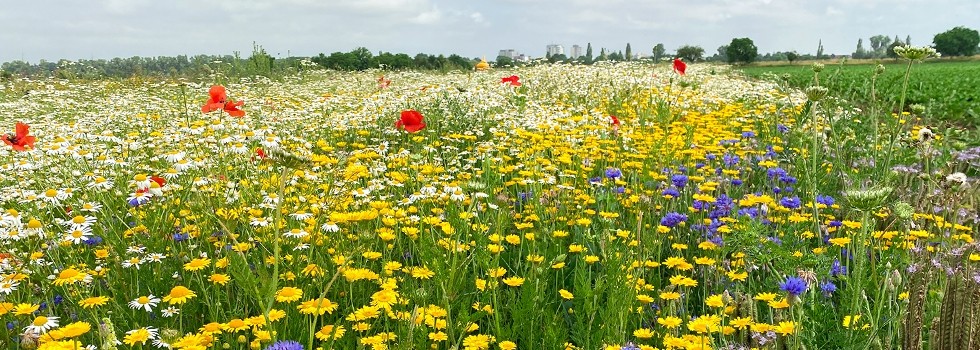Promotional Features
Fostering biodiversity together
Sustainability is a central aspect of Südzucker’s DNA and as a leading supplier of the food industry the company is committed to contributing to a healthy and sustainable future.
'Fostering Biodiversity' combines the environmental as well as social dimension of the company's Sugar division’s sustainability strategy and is being driven across several countries and activities. The close exchange and collaboration with its sugar beet farmers is a critical success factor and a clear enabler to jointly implement change.
By focusing on fostering biodiversity in and around sugar beet fields, the Südzucker Sugar Division aims to:
- Help farmers with the implementation on the field, based on scientific research and external experts.
- Increase regional biodiversity of animals and insects.
- Improve soil health and biodiversity in the soil.
- Move towards an even more responsible use of water.
One aspect of driving this topic are long-term collaborations that are researching the impact of near- and in-field biodiversity, for example with the Institute for Agroecology and Biodiversity in Mannheim, Germany. Many other initiatives at a local factory level are being driven forward in parallel.
The impact of flower strips on biodiversity
A collaboration with the Institute for Agroecology and Biodiversity, which researches the impact of flower strips on beneficial insects, pests and pollinators, as well as birds and other animals, in and around sugar beet fields, has been successfully ongoing since 2018.
The research team has been looking into the following questions:
- How do different flower mixtures compare in their effect on biodiversity?
- What is the effect on pollinators, beneficial insects and pests?
- How can these practices support a more sustainable future and higher biodiversity in sugar beet crop rotation?
Results have already been published in a whitepaper in 2021 and updated results from the following year are being consolidated as well. Nevertheless, the goal is also to transfer the results of this research into practice on the farmers’ fields. To push this topic further, Südzucker aims to extend activities by collaborating with partners.
Fostering biodiversity and measurement catalogue
The Südzucker Biodiversity Alliance is a cooperation, launched by the Südzucker Sugar Division, in order to foster biodiversity more strongly with farmers and partners along the value chain.
The Institute for Agroecology and Biodiversity has been commissioned to set up a scientifically based measurement catalogue on which basis farmers can select measures to implement within the Südzucker Biodiversity Alliance. During the creation of the catalogue and its requirements, the content has been founded with an initial group of farmers, involved in the pilot project. Every measure has a different level of points allocated, that in the end needs to sum up to the necessary total. The weighting of the various measures is based on several aspects, including the measure’s impact on biodiversity and the effort required to implement the measure.
Requirements for implementation
Every participating farmer needs to implement enough measures to reach 100% of the needed points, based on the size of their beet field (e.g. 10 hectare of beet field would require him to implement enough measures to reach 10 points).
- The catalogue of requirements describes specific measures that can be measured & audited (beyond the legally required minimum*).
- Each measure has specific requirements that need to be adhered to.
- Farmers report on the implementation of the measures with photo documentation and lists in a traceable system.
Pilot near factory in Offstein
The pilot project started in Autumn 2022 by a community of six farmers (Mainz/Bingen region, Undenheim) near the plant in Offstein and is set to run for the next three years. The first agreed scope for 2023 was the implementation of biodiversity measures on an area of 14 hectares and the farmers need to reach 60 pts (due to 60 hectar beet field). Due to the bilateral agreement, the implementing farmers receive a premium on top of the price for their sugar beet.
This pilot project will also provide many key learnings and is a basis for further finetuning of the measures, requirements, structure, organization among other elements. Needless to say, external factors and their influence is part of the evaluation of efficiency, too.
This is just the first step for the Südzucker Biodiversity Alliance and one that is anticipated to be extended beyond the Offstein region to farmers from other regions in Germany.
For more information about the Südzucker Biodiversity Alliance visit Suedzucker.
*Refer to official agri-environmental measures


